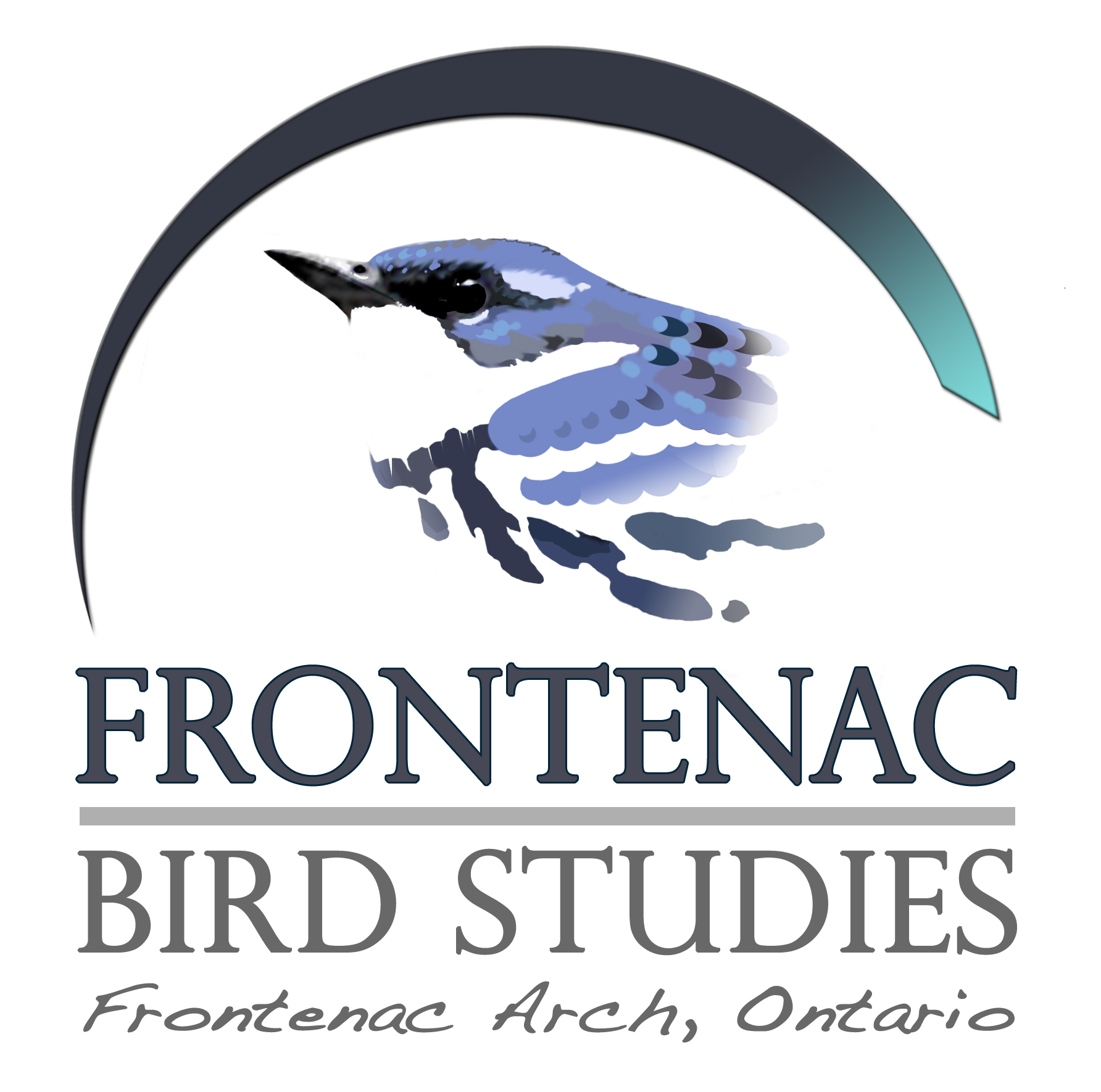
Our roster of Monitoring Avian Productivity and Survivorship (MAPS) stations has grown in 2010! Our new site called Blue Lakes is the northernmost of the three and is about nineteen kilometres north of Maplewood Bog. The site fills a key gap for us both spatially and in species coverage. Finding this site was quite an exercise that involved several weeks of map study and reconnaissance. I found lots of other sites that had potential but there was always a negative factor or two with them. Access, terrain, edge conditions and species mix were key considerations that were finally met when the Blue Lakes site was discovered about two weeks ago. A satellite view of the “AXIS” network is included below. Each of the three stations provides coverage of an area up to a four kilometre radius of the station centre, which means that we are now generating productivity statistics for 150 square kilometres of the Frontenac region – very exciting.


This is the view from the banding station, which is situated on a scrubby peninsula that bisects a horseshoe-shaped lake full of emergent vegetation, amphibians and a small heronry as well.

The Blue Lakes is probably the most varied of the three stations in terms of habitat. A circuit of the ten net lanes passes through rocky scrub edge along the shores of small lakes, mature deciduous forest, deciduous swamp thickets, areas of young balsam fir/shrub thicket and grass/lichen outcrops. Also distinct here is the presence of a dense understorey – not represented at our Rock Ridge or Maplewood Bog sites further south.

Balsam Fir occurs throughout the area but is quite dense along a wet draw through mixed age forest with an uneven canopy. The conifers attract species such as Hermit Thrush and Magnolia Warbler, among others. The firs and the odd spruce here and there add a nice northern feel, which becomes more noticeable as you approach Highway 7 from the south. The Blue Lakes site is at the edge of the Boreal Hardwood Transition zone.

These clearings are our main modes of traversing the site. They provide stable footing and a relatively flat, unobstructed path through the station. Field Sparrow and Sweetfern are dominant species in the rocky clearings where evidence of a rock flipping Black Bear was also found.

This is the important edge habitat that will (hopefully) attract large numbers of dispersing young and adult birds in the latter half of the breeding season. Both of the edge nets on the peninsula performed very well today, which was very pleasing.

 We banded a Yellow-throated Vireo (YTVI) that was captured in net 1 on first check! This fellow has been singing from the oaks above the net lane for at least two weeks. This is the first capture of a YTVI for the MAPS program. They are a Frontenac Arch specialty of sorts, quite common in deciduous forest with clearings, so it was great to finally band one!
We banded a Yellow-throated Vireo (YTVI) that was captured in net 1 on first check! This fellow has been singing from the oaks above the net lane for at least two weeks. This is the first capture of a YTVI for the MAPS program. They are a Frontenac Arch specialty of sorts, quite common in deciduous forest with clearings, so it was great to finally band one!

Black-throated Blue Warblers are a dominant species at Blue Lakes, largely due to the dense undergrowth found in the forests. Seabrooke and I estimated that between 5-7 territorial males are present in the core area of about 8 hectares. It is unclear as to whether these males are mated as no females were observed or captured today. The capture and banding of this second-year male was also a first for our MAPS program. Black-throated Blues are wonderful birds and we can look forward to their buzzy tones for years to come!

The other dominant species at Blue Lakes are Veery and Chestnut-sided Warbler but a very diverse community of breeding birds was evident this morning. Singles of Hermit Thrush, Scarlet Tanager and Warbling Vireo (1st banded by FBS) were banded along with several Common Grackles and a lone Red-winged Blackbird (1st banded by FBS).

I’ve only just barely scratched the surface of all that was enjoyed and discovered today. Visits to Rock Ridge and Maplewood Bog are imminent and the 3 A.M wake-up calls beckon me to cut this summary a bit short. We will have six more mornings of banding at Blue Lakes this summer and we are looking forward to each of them – a great study site indeed.
Here are the stats…
.
Blue Lakes – Visit 1 of 7
New birds banded (24 of 14 species)
Common Yellowthroat – 1
Veery- 4
Rose-breasted Grosbeak – 3
American Robin – 1
American Redstart – 1
Chestnut-sided Warbler – 3
Black-throated Blue Warbler – 1
Warbling Vireo – 1
Ovenbird – 2
Yellow-throated Vireo – 1
Scarlet Tanager – 1
Hermit Thrush – 1
Red-winged Blackbird – 1
Common Grackle – 3

Check the YTVI face! What is happening to me???
This was the first YTVI i’d ever handled, which was really cool. They have tons of personality!